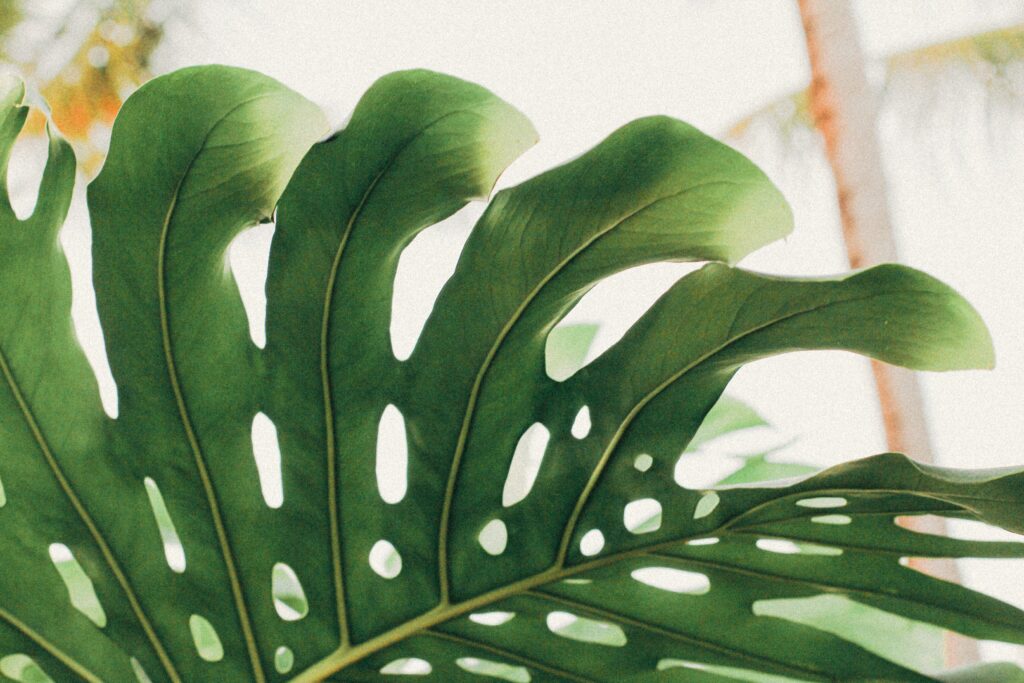Monsteras are some of the most popular houseplants available today. From small to large, Monstera plants can be found at virtually all nurseries, big box retailers and even grocery stores. These plants are so popular thanks to their beauty and easy-going nature. Wanting your plant to truly thrive means having an understanding of Monstera Deliciosa water needs.
What is a Monstera Deliciosa houseplant?
The Monstera Deliciosa is a compact vine that can be found across plant retailers worldwide. The “Deliciosa” variant is considered to be the entry-level member of the Monstera family, readily available in a variety of sizes at affordable prices.
They are easy to spot thanks to their signature big, beautiful dark green leaves. On mature plants, these leaves develop detailed fenestration patterns that give the Monstera its signature look.
Monstera Deliciosa houseplants are also really forgiving and easy to care for. Bright light, moderate water, humidity and warm temperatures go a long way to keeping these plants very happy. Their looks and care-free nature make Monsteras a great starter plant to start a plant collection. Veteran growers also love Monsteras – whether it’s the classic Deliciosa or rarer variants like the hard-to-find Thai Constellation Monstera.
How often should I water my Monstera?
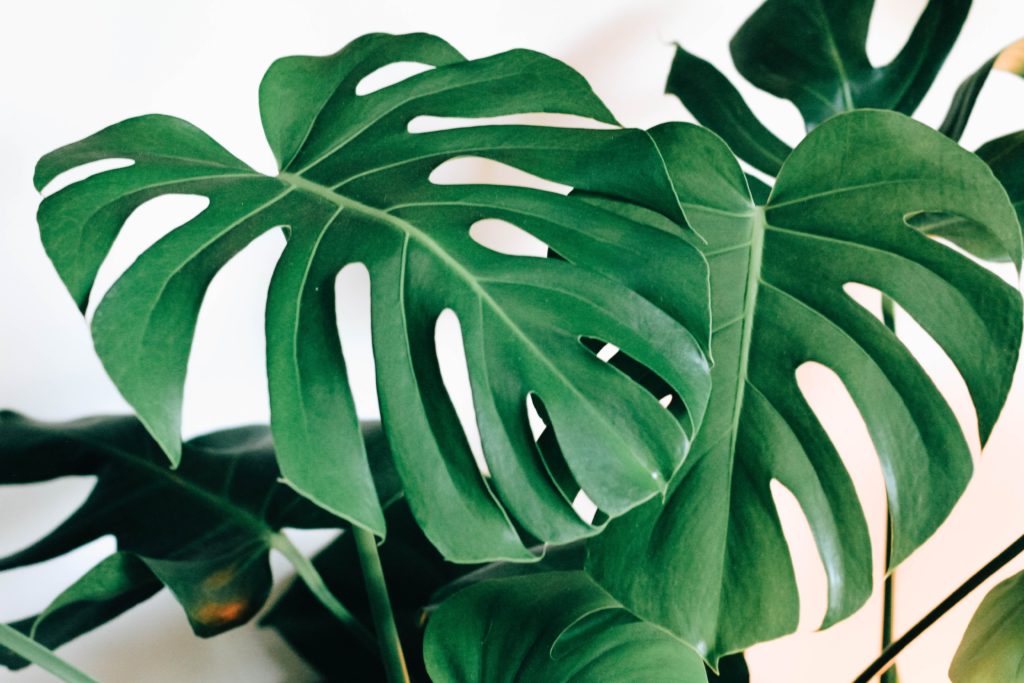
Keep your Monstera hydrated with a generous watering every 1-2 weeks, when the top 1 – 2 inches of soil feels dry. Expect to water more frequently during the warm growing season when there is brighter light, and water less frequently when there is less light during the dormant winter months. While it’s not necessary, some choose to use filtered water when watering their plants.
To help with watering, your Monstera pot should have drainage holes in the bottom to let excess water run through safely so your plant isn’t sitting in standing water for prolonged periods. Watering in the sink will allow extra water to pass through and down the drain.
I enjoy watering in the kitchen sink since it allows me more control with water from the faucet. This not only provides hydration, but a good soaking also encourages stronger root growth helping the plant stay strong. For plants too large to move, make sure they have a plastic or stone saucer below to catch any runoff water.
Despite common myths about tropical plants, Monsteras do not want to be kept overly moist. Constantly wet soil invites pests and fungus which can feed from your plant’s root system and stems, which leads to infection and root rot.
To avoid this, pay careful attention to your plant’s soil and only water when the top layer feels especially dry. Your plant would much rather be kept slightly dry than slightly wet, so if you’re on the fence about watering, it’s probably okay to wait an extra day or two.
There really is no perfect guide or schedule for Monstera Deliciosa watering. The unique characteristics of your home – the lighting, humidity and temperature – all play a role in the water needs of your plant. Instead, pay careful attention to your plant and its soil condition to understand when it’s the perfect time to water.
Water requirements: Monstera Deliciosa vs. other variants
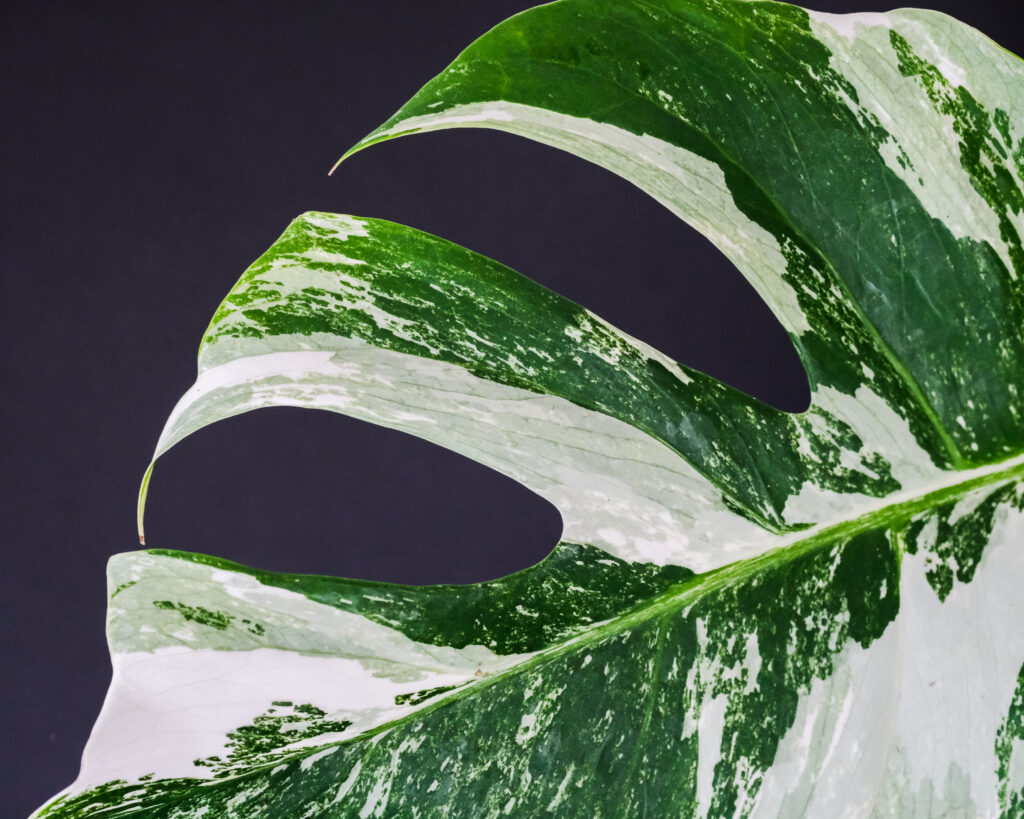
Monstera Deliciosa will be happy with waterings every 1-2 weeks. If you also have a Monstera Albo or Monstera Thai Constellation, know that these plants need less water than their all-green cousins. You can read our in-depth guide on Thai Constellation watering needs here.
While the Thai Constellation is genetically identical to the Deliciosa, the beautiful creamy variegation sets the plants apart in significant ways. The patterns on the Thai Constellation are areas of the leaf without any chlorophyll, meaning these sections cannot covert light into energy for the plant.
Water and lighting needs are directly related. Since variegated Monsteras generate less energy, they also require less water, and are prone to root rot and other issues from overwatering.
How to avoid under-watering your Monstera?
While Monsteras prefer to stay on the dry side, like all tropicals, they do require regular waterings to stay healthy. Paying attention to the dryness of your plant’s soil is the best indicator of when to water. While these plants can tolerate some drought, going too long between Monstera Deliciosa water sessions may result in the browning of leaves and slower growth. Check in on your plant regularly to ensure the conditions stay perfect to encourage growth and health.
How to avoid over-watering your Monstera Deliciosa?
You can avoid over watering by observing the physical conditions of the soil and plant, and paying attention to your watering schedule. Have you recently watered and notice the soil is damp? If so, wait a few more days before watering again. Prolonged over watering will lead to plant decline. This usually starts as yellowing leaf edges. If you notice this, immediately step back on your watering schedule.
Additionally, over-watering attracts a wealth of Monstera plant issues, such as gnats, fungus and plant pests which may also spread to nearby plants. The easiest way to avoid this is to always lean on the side of keeping your soil dry and watering well once every week or two, instead of providing smaller amounts of water every few days.
What are the water drops on Monstera leaves?
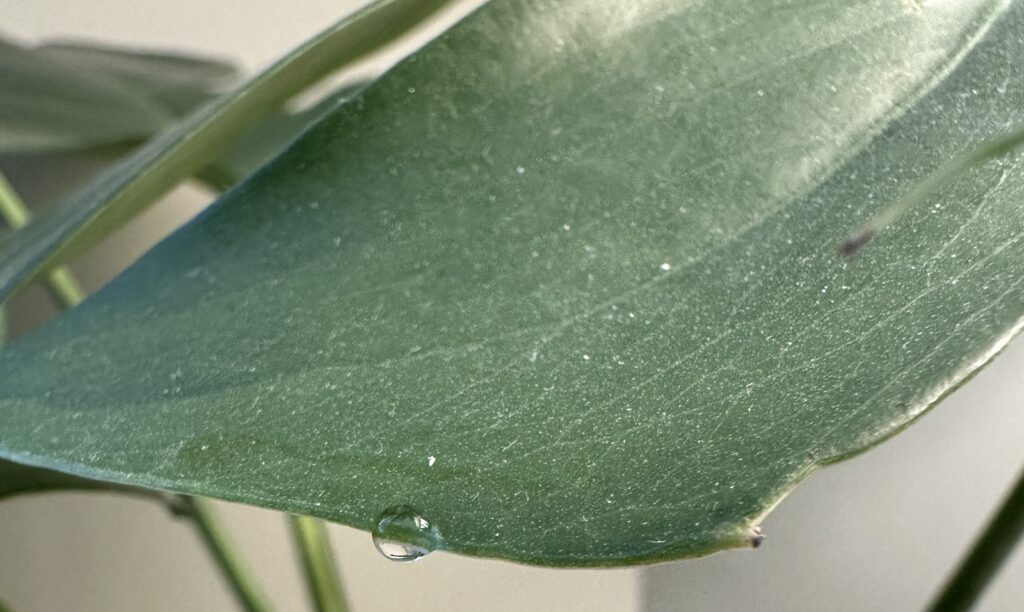
The morning after a good watering, you may notice water drops at the tips of your Monstera leaves, especially on the newest leaves of your plant. Some call this behavior “crying” “weeping” or “sweating” and it’s a completely natural process. The actual term for this process is Guttation and is your plants natural way to flush excess hydration from the plant.
Typically, this occurs as an invisible vapor, but when the plant has significant water, droplets form on the leaf edges.
Does guttation mean I’m overwatering my Monstera?
Don’t be alarmed if you first notice guttation drops on the edges of your Monstera. While it means the plant has plenty of moisture and does not need to be watered for several days, this is a common biological occurrence. However, if you frequently notice your Monstera crying or weeping after waterings, your schedule is likely too frequent and simply waiting a few more days between waterings should bring you plant to a better watering schedule.
The best soil for Monstera watering
Soil plays one of the most important parts to keeping your plant hydrated in healthy. While some plant enthusiasts grow their Monstera plants soil-free using LECA balls, a well-draining soil mixture can be just as successful. Many growers recommend a combination of potting soil, succulent mix and orchid mix.
I’ve had success growing Monsteras with equal parts succulent mix and orchid mix. This ensures your Thai Constellation Monstera water can easily pass through the soil medium and out of the container and drying faster, avoiding the issues that come with standing water in your plant container.
The best pots for Monstera watering
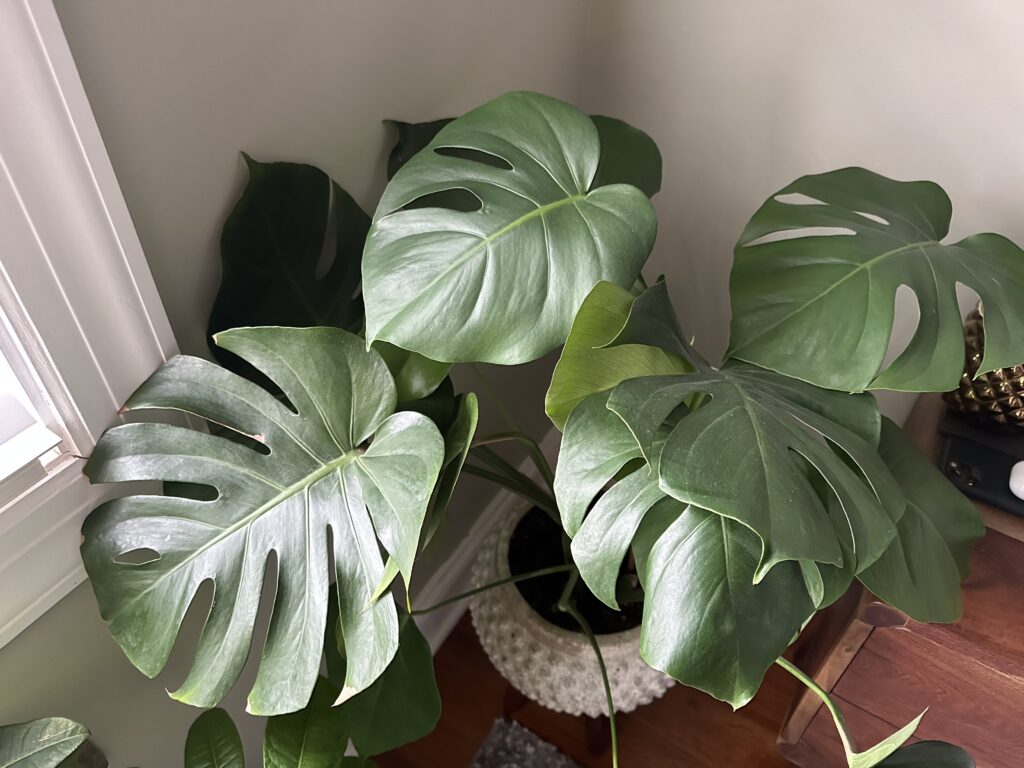
Because of their easy-going nature, Monsteras of all varieties can thrive in a variety of pots. Whether you want a plastic container, terracotta, or glazed pot, your plant will likely be happy as long as there is proper drainage at the bottom of the container to allow extra water to drain from the pot.
The best lighting for Monstera plants
Lighting and watering go hand in hand for all-around plant health. While the rule of thumb is to provide as much indirect light as possible for your Monstera, our dedicated guide to Monstera lighting will walk through the best conditions to encourage growth and leaf fenestrations.
Key Takeaways: Monstera Deliciosa Water Needs
Perfecting the mix of watering, lighting and humidity will help your Monstera grow quickly and produce beautiful foliage. Despite common beliefs, Monsteras like to stay on the dry side. Too much water can lead to root rot and pests, which may lead to decline. Proper drainage and the right soil will go a long way to ensuring your plant stays hydrated and develops healthy roots for long-term plant health.

